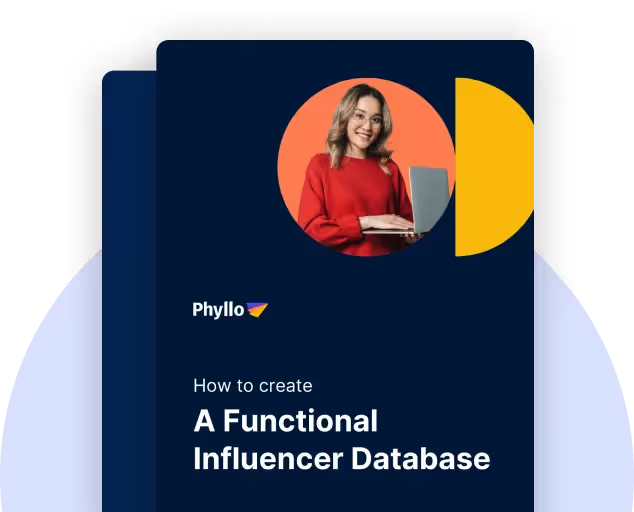Ever wondered how some brands just seem to "get" their audience so perfectly on social media sites? You'll be amazed to know that behind the scenes, there's a secret tool! What's it? The Social Media Demographics API.
The tool is so helpful that it lets you know about the person on the opposite side of the screen and their whereabouts, like their age range, location, profession, likes, and dislikes. This demographic data is presented to you in a sorted way that's easily digestible by internet users.
The API has got you covered if you are searching for the age distribution of X (Twitter) users the top interests on Facebook, or the gender split on Pinterest.
Instead of wasting marketing efforts and resources by blindly advertising on all platforms, by using the API, you can understand which social media networks, sites, and handles have a higher concentration of daily and monthly active users and of the demographic you want your social media advertising spend to reach.
Are you worried about making your social presence stronger? Are you ready to get a clear picture of the digital crowd? Well, then, you are at the right place!
We will unveil the secrets of Social media demographics API here. Believe me, it's the coolest thing as it sounds.
What is the Social Media Demographics API? Popular Demographics on Social Media?
The Social Media Demographics API is a game-changing tool designed specifically to retrieve in-depth demographic data from an array of social media platforms.
This isn’t just basic data; it dives into intricate details, including age brackets, gender distribution, geographical breakdown, user interests, Twitter users, Twitter demographics used, behavioral patterns, other social media usage statistics, statistics, and even more.
For example, the major players in the social media world, like Instagram, Facebook, and Twitter, have a unique user base, and within this vast sea of users, preferences and behaviors vary widely.
A simple scroll on Instagram might reveal that a majority of daily active male users there, engaging with travel-related content, might belong to the younger demographic in the 18-34 age bracket and come predominantly from urban regions. Meanwhile, on Twitter, political discussions might see higher traction among male, daily active users too, aged 30-50. Learn more on Instagram Audience Demographics for Influencer Marketing Platforms
But how does one extrapolate such specific data on a larger scale? That’s where the Social Media Demographics API comes into play. By utilizing this API, businesses can bypass generic metrics and delve straight into precise demographic details.
Whether it's figuring out which age group youtube users is predominantly, the monthly active users during a specific time of the day, or identifying which geographical region boasts the monthly active users and highest engagement rate for youtube ads in a particular content category - this social media platform API provides granular insights about youtube users, Facebook users, LinkedIn users and more.

Why is demographic data important for my business?
Understanding your target market and consumer behavior on a social media site is a critical aspect of any social media strategy. Demographic data for social media marketing provides insights such as active social media users and age demographics such as:
- Audience Preferences: Knowing the age, location, and interests of your followers can help tailor your content to meet their preferences.
- Targeted Advertising: By understanding the demographics, businesses can design advertising campaigns that resonate with specific audience segments.
- Product Development: Insights from demographic data can inform product features and designs that cater to your audience's needs.
- Trend Prediction: Demographic data helps businesses predict upcoming trends by understanding the evolving preferences and behaviors of different groups. As younger users adopt new technologies or platforms, being ahead of these shifts can give a business a competitive edge.
- Resource Allocation: When businesses understand where their primary target audience is located and what they are interested in, they can allocate resources more effectively. This could mean opening a new store in a high-demand area or investing in online campaigns for regions with a strong online presence.
- Enhanced Customer Experience: Tailored experiences are becoming the norm in today's digital age. With demographic insights, businesses can personalize interactions, content, and even product recommendations, ensuring customers feel valued and understood.
- Risk Management: Understanding the demographic shifts of daily active users can help businesses anticipate challenges. For instance, if a primary age demographic of a product is aging, the business may need to adapt its offerings or marketing strategies to appeal to a younger audience.
- Improved Decision Making: Data-driven decisions are often more accurate and beneficial in the long run on a popular social media network. By grounding business strategies in solid demographic data, companies can make choices that are more likely to yield positive results.
- Diversifying Revenue Streams: By understanding the preferences and habits of various social network demographic segments like Instagram demographics and Twitter demographics, businesses can introduce new products, services, or initiatives catering to different groups, thereby diversifying and potentially increasing their revenue.
How to Access Social Media Demographics Data Using the API?
Harnessing the power of demographic data on any social media platform can propel your social media strategy to new heights. But how do you efficiently access this treasure trove of information? Here’s a step-by-step guide:
API Integration:
- Select the Right API Provider: Before integrating, do some research to identify an API provider that caters to your specific needs. Consider factors like ease of use, supported social media platforms, and pricing.
- Set Up the Environment: Ensure that your software or platform is compatible with the API. Some providers might offer SDKs (Software Development Kits) that can simplify the integration process.
- Test the Connection: Once you’ve integrated the API, it's advisable to run a few test queries to ensure data is being retrieved correctly.
Related Read:
- Social Media API: Guide on Top APIs for Developers
- How to Use Instagram API Integration?
- How to Use the TikTok API - The Complete Guide for Developers
Request Data:
- Define Your Parameters: Clearly outline the demographic data you’re interested in. This could range from age groups and gender to specific geographical locations or interests.
- Query the API: You must use specific parameters to send a request to the API. Sometimes you'll be required to construct a URL using the function provided by the API.
- Handle Rate Limits: Be mindful of any rate limits imposed by the API provider. If you send too many requests in a short time, you might get temporarily blocked.
Analyze Results:
- Retrieve the Data: Informats like JSON or XML, the API will return the necessary demographic data once your request is processed.
- Parse the Data: You have to parse the data to a readable format or import it to a tool or database for analysis. However, this depends on the structure of the returned data.
- Draw Insights: Now you can draw insights by analyzing the demographic data, like trends and patterns. You can take the help of tools like data visualization software as they are beneficial at this point in time.
- Refine and Repeat: As with any data-driven strategy, it’s crucial to continuously refine your queries and analysis based on the insights you gather, ensuring you always make informed decisions.
Optimizing Your Influencer Marketing Strategy using Phyllo API
Influencer marketing, a vital tool for today's Gen Z users, relies heavily on understanding and reaching the right audience. With all its advanced features, Phyllo API makes sure that your influencer marketing campaigns are data-driven and intuitive. Look here to learn how to optimize your strategy:
Find The Right Influencer:
- Audience Alignment: Before collaborating, ensure the influencer's audience aligns with your target demographic, for example, young adults. The Phyllo API lets you delve deep into the demographics, from age group to regional preferences and more.

- Niche Expertise: Beyond just numbers, consider the influencer's niche. Is it fashion, tech, travel, or something else? Ensure it matches your product or service for maximum resonance.
Measure Campaign Effectiveness:
- Engagement Metrics: Post-campaign, don't just stop looking at likes and shares. Dive into engagement rates, click-through rates, and conversions using Phyllo API. Learn more on Instant access to engagement data
- Feedback Loop: Collect qualitative data. What did the audience think of the collaboration? Were they receptive or skeptical? This feedback can be invaluable.
Adapt Strategy:
- Continuous Learning: The beauty of influencer marketing is its dynamic nature. What worked last month might not work now. Use the Phyllo API to continually get fresh data.
- Refine Collaborations: Based on data, you might find that certain influencers resonate better with your brand than others. Focus more on these partnerships.
- Innovate Content: With insights on audience preferences, you can guide influencers on the type of content that might work best, be it reels, blogs, or live sessions.
Takeaway
The Social Media Demographics API presents a streamlined and efficient way to access this invaluable data. By tapping into the specific nuances of various social media age demographics and audience segments on social platforms, businesses, and social media campaigns can tailor their strategies for maximum resonance and impact.
The potential applications are vast whether it's regarding ad spend, social media statistics, optimizing influencer campaigns with tools like Phyllo API, or refining ad targeting. As we move forward in the the social media landscape, harnessing these insights will benefit the platform's audience and be essential for businesses seeking to thrive in a digitally-driven marketplace.
FAQ:
1. Can I simultaneously use the API for multiple social media platforms?
Yes, you can. APIs are developed to draw data at once from various platforms, depending on your needs.
2. How often is the demographic data updated?
The data is frequently updated to ensure you have the latest insights. The exact frequency may vary based on the API provider.
3. Can I combine demographic data with other marketing analytics?
Absolutely! The data from the Social Media Demographics API can be integrated with other marketing metrics for a comprehensive view of general social media demographics across all social media users and demographics.
4. Can the Social Media Demographics API help me identify new target audiences?
Yes, by understanding the broader Facebook demographics of Facebook users and Facebook demographics of social media users who use a more popular social media platform, you can identify new potential audience segments you hadn’t considered before.
5. How to be sure about the privacy and security of the demographic data that's collected?
Few API providers stick to strict data privacy regulations. You should choose and work with one that follows it. Ensure encryption, regular security audits, and compliance with privacy laws.
6. Is the Social Media Demographics API subscription-based?
Most APIs work on a subscription basis, offering different tiers based on the frequency and volume of data requests. Check with your provider for specifics.


.avif)







